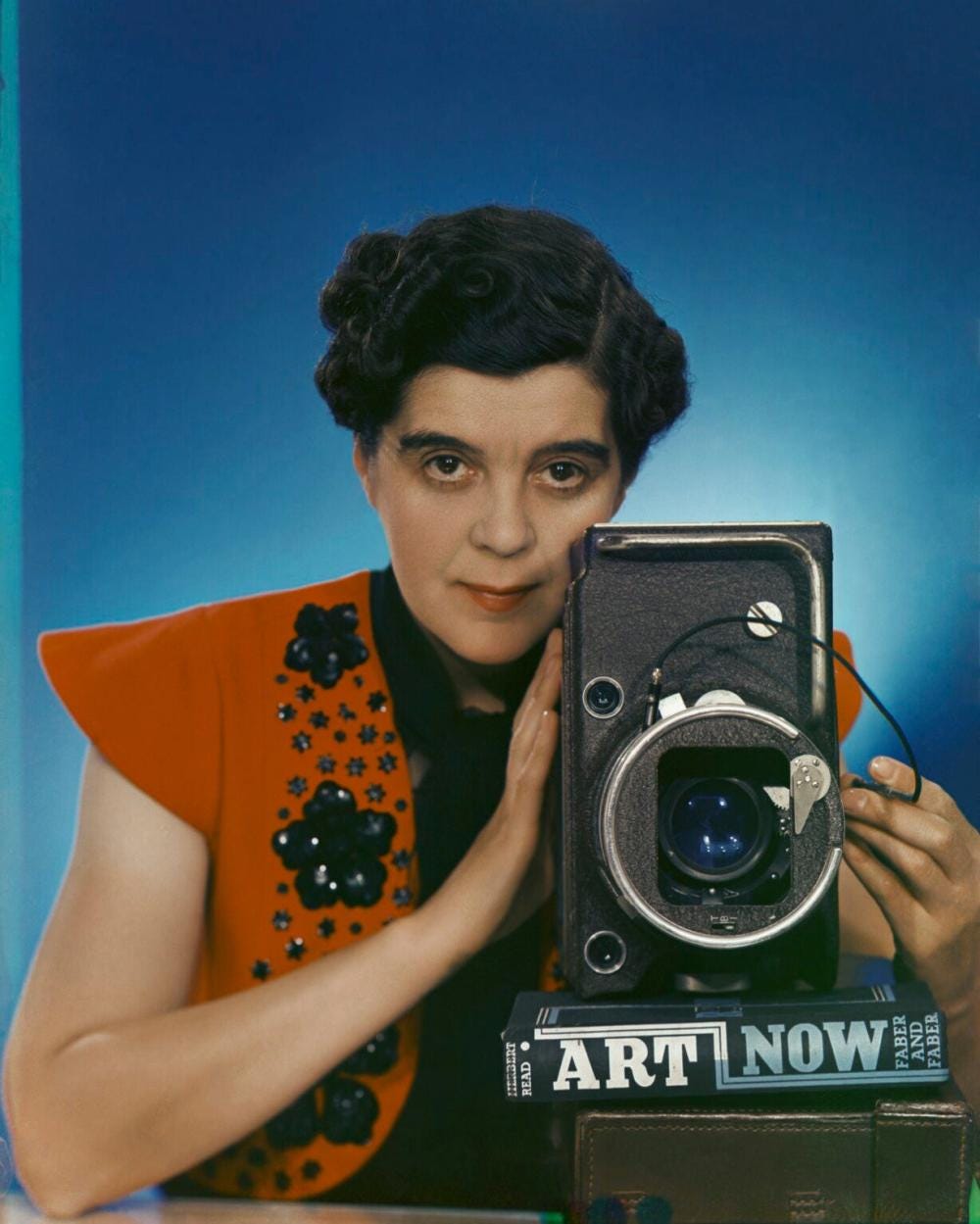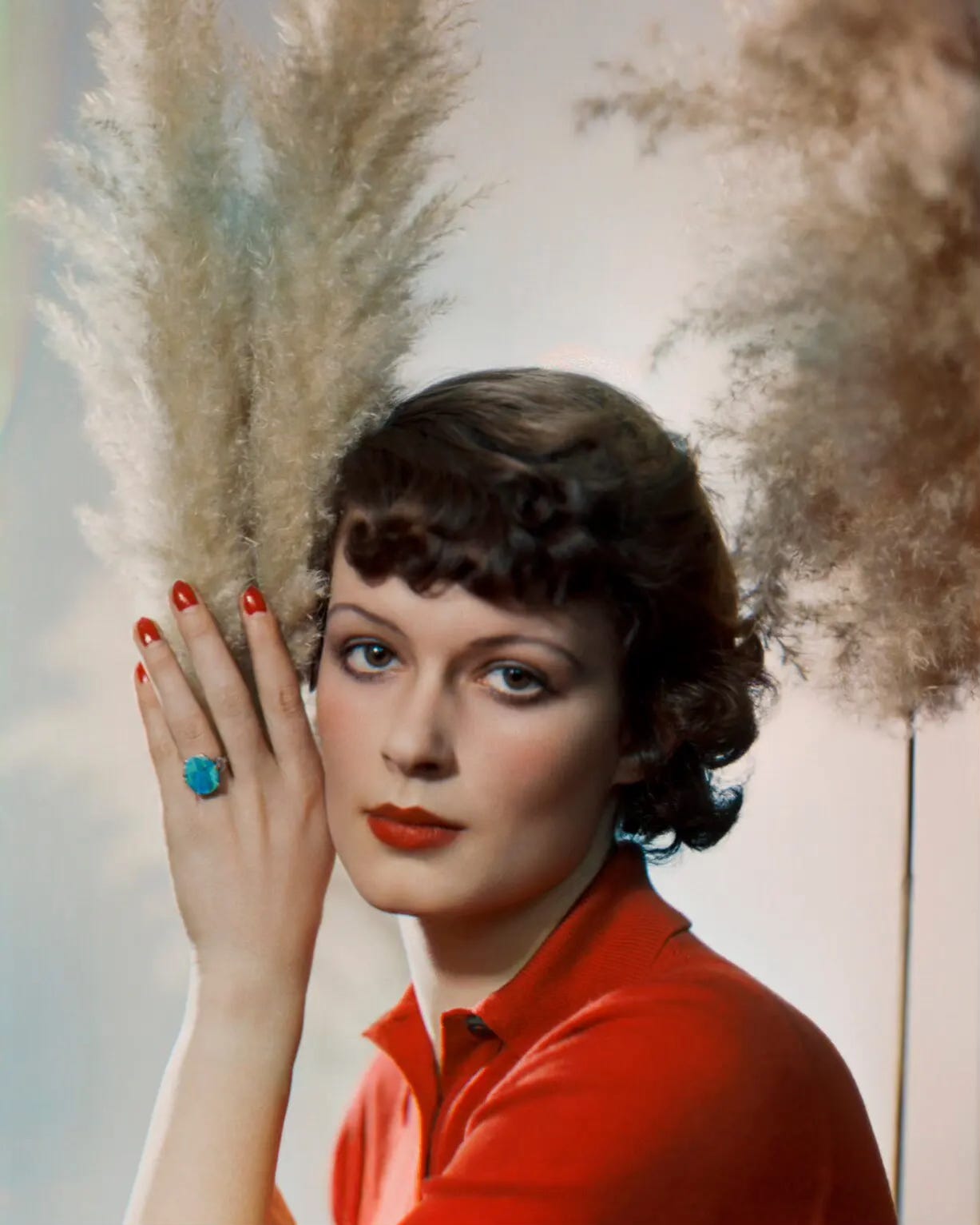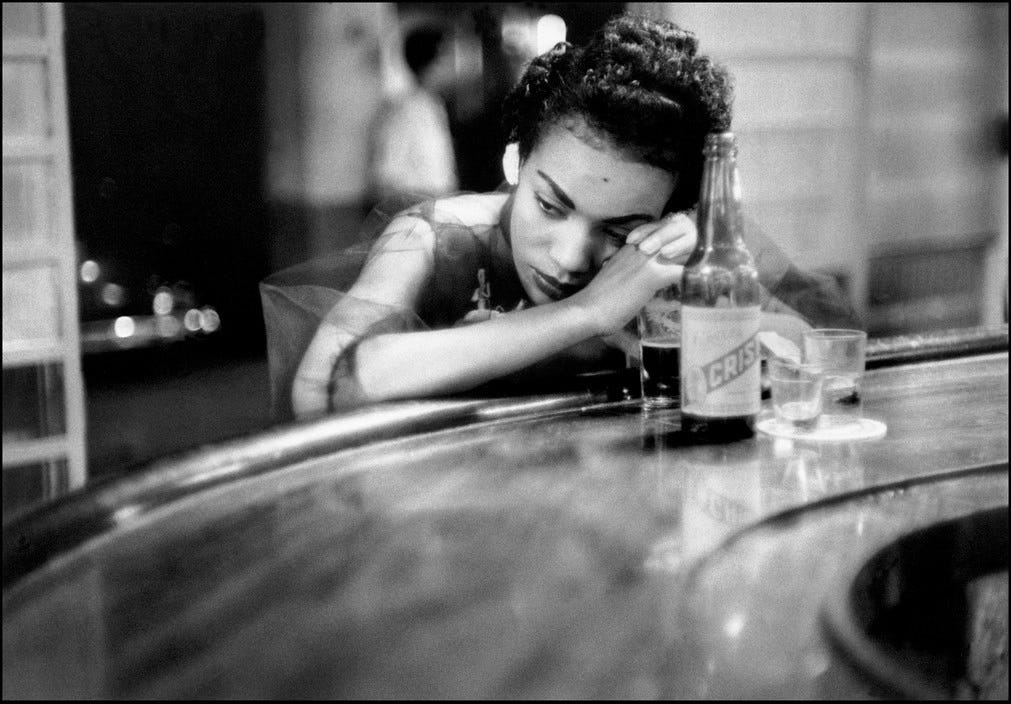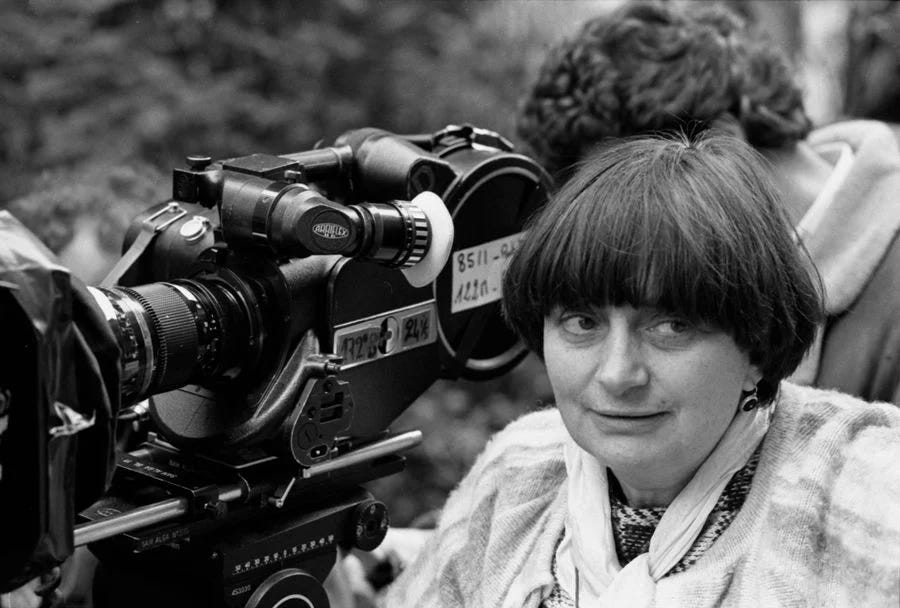We all know how powerful a storytelling tool photography is, yet history shows us that in art, as in many areas of life, women do not always get the recognition they deserve. On this International Women's Day, I'm shining a light (no pun intended) on some of my favourite trailblazing women photographers.
Yevonde Middleton (1893 - 1975) enjoyed a successful 60-year career as a portrait photographer. Like many of her contemporaries, she worked predominantly in black and white. When Colour Photography Ltd developed the Vivex One colour process, she switched to colour photography until around the beginning of World War II. A member of the Suffragettes and a staunch advocate for women’s rights, Middleton, also known as Madame Yevonde, or simply, Yevonde, worked from her own studio. She photographed well-known society figures of the day, like A.A. Milne, Louis Mountbatten and Noël Coward. Tatler showcased her work. Her most celebrated works include Goddesses and Others (1935), a series where women were made up and dressed up as, well, goddesses, for a series of figurative still lifes. Yevonde once said, “portrait photography without women would be a sorry business." Preach, sister.
Eve Arnold (1912 - 2012) was a humanist photographer, creating captivating portraits of well known and everyday people. Arnold’s first photo essay of the fashion scene in Harlem was published in the Picture Post in 1951. In 1957 she became the first woman to become a full member of Magnum Photos. In 1961 she photographed Malcom X at a Washington D.C. rally, and Marilyn Monroe on the set of The Misfits. Arnold’s first book, The Unretouched Woman, a monograph depicting women from the lens of a woman, was published in 1974 when Arnold was in her sixties. Arnold remarked
'when I became a photojournalist, I was looked on as someone apart—a “career lady,” a “woman photographer.” My colleagues were not spoken of in inverted commas; they were not “career men” or “men photographers”. I was not happy about it, but realized as have women before me that it was a fundamental part of female survival to play the assigned role. '
Agnès Varda (1928 - 2019). Varda was an artist, photographer, and New Wave filmmaker. She started her career as a stage photographer. Varda, known for her stories about women, made a pro-women's rights film in 1977 called L'une chante, l'autre pas (One Sings, the Other Doesn’t). The film follows the friendship of two women over 14 years and addresses issues like abortion, illegitimate children, and suicide. Varda said
"I'm not at all a theoretician of feminism. I did all that—my photos, my craft, my film, my life—on my terms, my own terms, and not to do it like a man.”
She documented a trip to Cuba, which she turned into a film. The Centre Pompidou exhibited the stills in 2016.
Gerda Taro (1910 - 1937) was born Gerta Pohorylle in Stuttgart. In 1933, she and her family left for Paris due to rising anti-Semitism from the far-right in Germany. She began her career as a picture editor, which enabled her to acquire legitimate French residency. In 1934, she met Endre Friedmann, from whom she learnt basic photographic techniques. In order to sell their work and disguise their Jewish roots from certain factions across Europe, Taro and Friedmann created the fictitious persona of American photojournalist Robert Capa. Eventually keeping the Capa name for himself, Friedmann joined Taro in Spain in 1936 to document the war. They collaborated to publish work under Capa’s name. Pohorylle was now working under her new pseudonym of Garda Taro. There are two accounts of Taro’s death. The prevailing story was of Taro being hit by a tank on 25 July 1937 and dying of her injuries the following day. Another account says the tank driver ran over her, and she died from her injuries a few hours later. In any event, Taro was only 27 when she died. Taro was the first female photojournalist to die on the front line.
For decades, much of Taro’s work was attributed to Capa. In 2011, filmmaker Trisha Ziff released “The Mexican Suitcase.” This documentary tells the story of 4,500 negatives taken by Taro. They had been lost since 1939. The film helped to cement Taro’s place in the canon of revered photojournalists.
There are many more photographers I’d like to include, but time is against me. For now, I’ll mention the following:
Julia Margaret Cameron (1815 - 1879), Pictorialist and first artist-in-residence of the South Kensington Museum (now the V&A Museum)
Anna Atkins (1799 - 1871), who popularised the cyanotype in her 1843 book Photographs of British Algae: Cyanotype Impressions.
Hilla Becher (1934 - 2015), photographer of German industrial landscapes
Cristina García Rodero (1914 - ) Spanish documentary photographer of rituals and festivals
Lisette Model (1901 - 1983), mentor of Diane Arbus
Alicia d'Amici (1933 - 2001), Argentinian photographer, feminist publisher and activist
Last but not least, a giant high-five goes to Catherine Leroy (1944 - 2006). A photojournalist, Leroy was captured by the North Vietnamese army in 1968, escaped, made a film about Vietnam veterans-turned-pacifists, then returned to Vietnam in 1975. Can you imagine doing such a thing - going back to the scene of a horrible, horrible crime?
These women have shown courage, creativity, and a strong vision. They've not just captured history; they've also shaped it. Their work has challenged perspectives, told untold stories, and inspired generations of photographers to follow in their footsteps. They defied society to create their art and tell stories their own way in an era when marriage and motherhood were the only path for the majority of their peers.
I celebrate their achievements, honour their legacy, and thank them for paving the way for those who defy expectations and dare to tell stories their own way.










Thank you so much for shining a light on these inspiring women! I heard about some of them, but of several I have not. They all seem like badasses. I often get sad and discouraged that women still get overlooked a lot of times in this field.